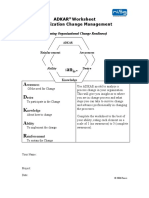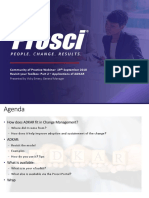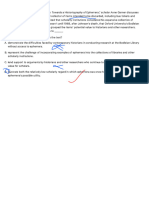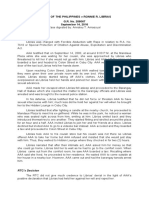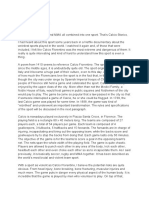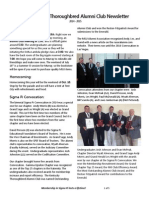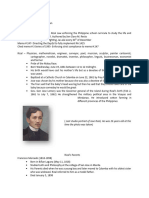0% found this document useful (0 votes)
202 views8 pagesFour Key Features of Change Management
Change management involves ensuring an organization responds appropriately to its environment. It has four key features: identifying dissatisfaction with current strategies, developing a vision for an alternative, creating a change implementation plan, and anticipating resistance. Common forces for change include new products/competition, customer/technology changes, and legal/social factors. Lewin's model outlines three stages for change: unfreezing current ways, implementing changes, and refreezing the new approach. Resistance to change stems from self-interest, misunderstanding, reluctance to change, and disagreement on need for change. Successful change management requires preparation, building a vision, planning implementation thoroughly, and overcoming resistance through communication and participation.
Uploaded by
saurabhCopyright
© Attribution Non-Commercial (BY-NC)
We take content rights seriously. If you suspect this is your content, claim it here.
Available Formats
Download as DOCX, PDF, TXT or read online on Scribd
0% found this document useful (0 votes)
202 views8 pagesFour Key Features of Change Management
Change management involves ensuring an organization responds appropriately to its environment. It has four key features: identifying dissatisfaction with current strategies, developing a vision for an alternative, creating a change implementation plan, and anticipating resistance. Common forces for change include new products/competition, customer/technology changes, and legal/social factors. Lewin's model outlines three stages for change: unfreezing current ways, implementing changes, and refreezing the new approach. Resistance to change stems from self-interest, misunderstanding, reluctance to change, and disagreement on need for change. Successful change management requires preparation, building a vision, planning implementation thoroughly, and overcoming resistance through communication and participation.
Uploaded by
saurabhCopyright
© Attribution Non-Commercial (BY-NC)
We take content rights seriously. If you suspect this is your content, claim it here.
Available Formats
Download as DOCX, PDF, TXT or read online on Scribd
/ 8



















